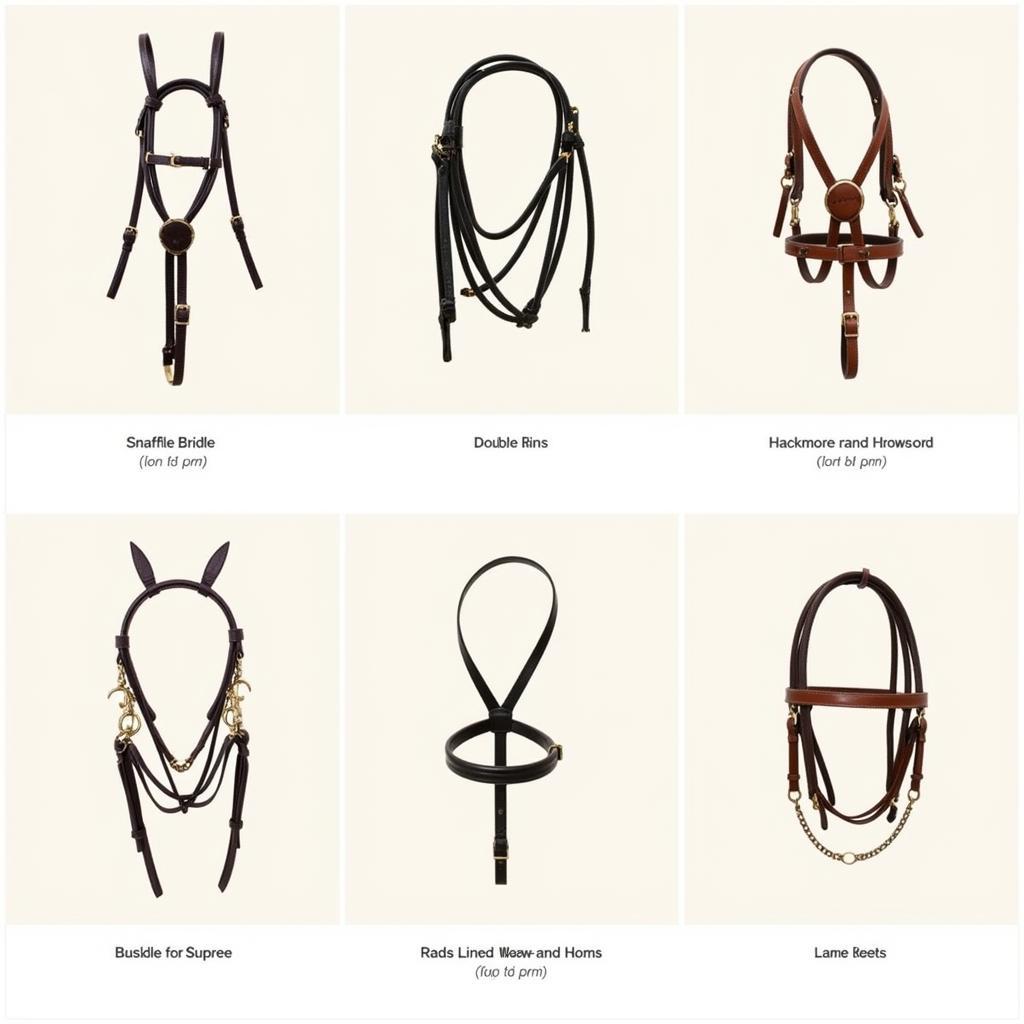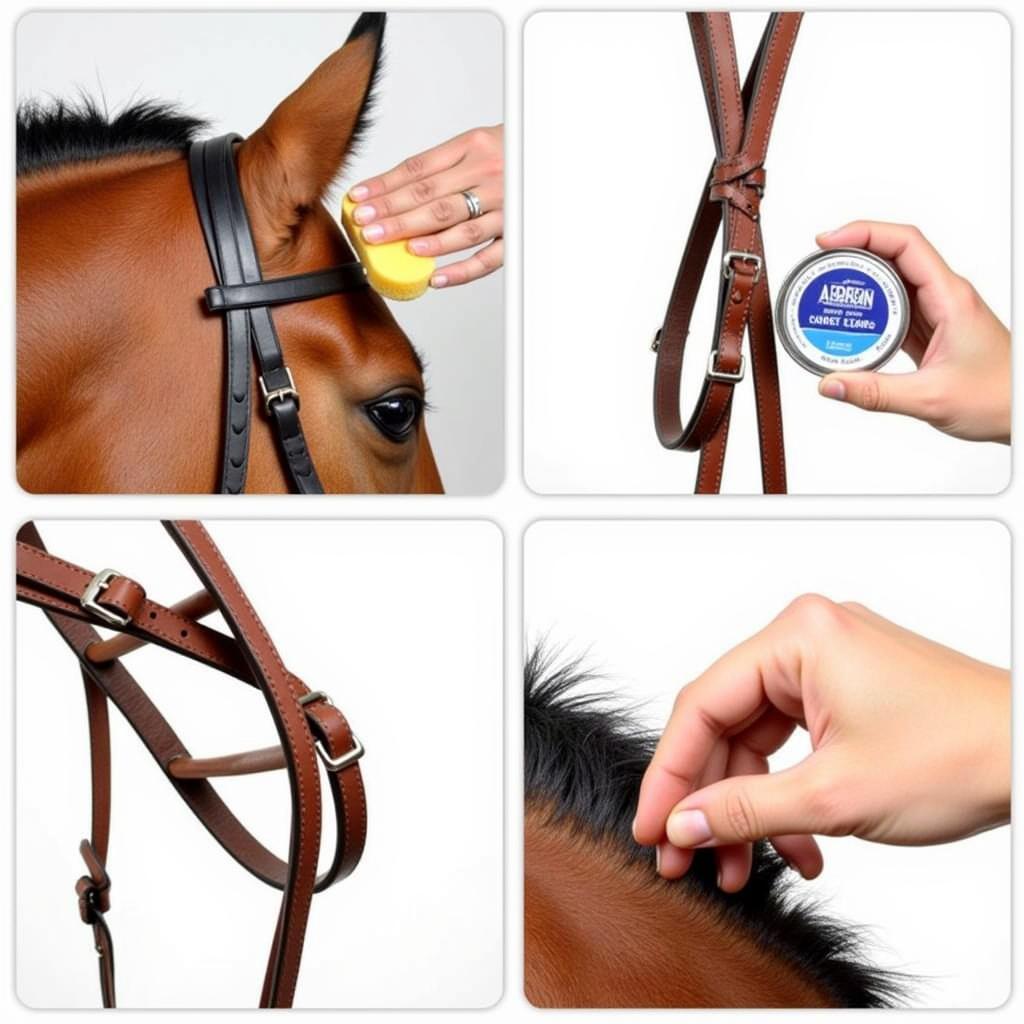Finding the Best Horse Bridles can feel overwhelming with the vast array of styles, materials, and features available. This guide will provide you with the knowledge you need to select the perfect bridle for your horse, ensuring both comfort and optimal performance. We’ll explore different types of bridles, their uses, fitting tips, and care instructions.
Understanding the Purpose of a Horse Bridle
A horse bridle is more than just a decorative piece of equipment; it’s a crucial tool for communication and control. It allows the rider to communicate directions to the horse through the reins, which are attached to the bit. The bridle also helps to stabilize the bit in the horse’s mouth. Choosing the right bridle is essential for a comfortable and effective riding experience.
Choosing the right bridle involves considering several factors, including the horse’s discipline, head shape, and sensitivity. You should also think about the rider’s experience level and personal preferences. A well-fitting bridle is crucial for the horse’s comfort and performance, and a poorly fitted bridle can cause discomfort, rubbing, and even injury.
 Different Types of Horse Bridles
Different Types of Horse Bridles
Types of Best Horse Bridles
Several different types of horse bridles cater to various disciplines and riding styles. Here’s a look at some of the most common types:
- Snaffle Bridle: The most basic and widely used type, the snaffle bridle features a single bit and rein. It’s suitable for a wide range of disciplines, from general riding to jumping and dressage.
- Double Bridle: Used primarily in advanced dressage, the double bridle utilizes two bits – a bradoon and a curb – and two sets of reins, offering more refined control.
- Pelham Bridle: Similar in function to a double bridle, the Pelham utilizes a single bit with four reins, providing a similar level of control but with a simpler design.
- Hackamore: A bitless bridle that uses pressure on the nose and poll instead of the mouth, the hackamore is a good option for horses with mouth injuries or sensitivities. Check out our horse bridle and reins for a more in-depth look at bridle and rein combinations. This information can be particularly helpful when choosing a bitless option.
- Sidepull Bridle: Another bitless option, the sidepull applies pressure to the sides of the horse’s face and nose. This type of bridle is often used for starting young horses or for trail riding.
Materials and Construction
Horse bridles are commonly made from leather or synthetic materials. Leather is a traditional choice known for its durability and classic look. Synthetic bridles are often more affordable, easier to care for, and come in a wider range of colors. If you’re interested in colorful tack, consider checking out our purple horse tack selection.
Fitting Your Horse Bridle Correctly
Proper fit is paramount for your horse’s comfort and well-being. A poorly fitting bridle can cause pinching, rubbing, and sores. Ensure the browband doesn’t restrict the horse’s ears and the cheek pieces are adjusted correctly. The bit should sit comfortably in the horse’s mouth without wrinkling the corners. Consider our headsetter for horses for additional training and fitting assistance.
“A properly fitted bridle is essential for the horse’s comfort and performance,” says renowned equine veterinarian, Dr. Emily Carter. “It’s important to pay attention to the details, such as the placement of the bit and the adjustment of the cheek pieces.”
Caring for Your Best Horse Bridles
Regular cleaning and conditioning are essential for maintaining the longevity of your horse bridle. Leather bridles require special care, including cleaning with saddle soap and conditioning with leather balm. Synthetic bridles can be cleaned with mild soap and water. For a complete list of essential horse equipment, check out our horse accessories list. It includes everything from grooming supplies to riding gear.
 Cleaning a Horse Bridle
Cleaning a Horse Bridle
Conclusion: Finding Your Best Horse Bridle
Choosing the best horse bridles requires careful consideration of various factors, including the type of riding you do, your horse’s needs, and your budget. A properly fitted bridle is crucial for both comfort and performance. Remember to clean and maintain your bridle regularly to ensure its longevity. By taking the time to research and understand your options, you can find the perfect bridle for a happy and comfortable riding experience.
FAQ
- What is the most common type of horse bridle? The snaffle bridle.
- What are the benefits of using a bitless bridle? Bitless bridles are ideal for horses with mouth sensitivities.
- How often should I clean my horse bridle? Ideally, after each use, but at least weekly.
- What is the difference between a double bridle and a Pelham bridle? A double bridle uses two bits, while a Pelham uses one with four reins.
- How can I tell if my horse’s bridle fits correctly? The bit should sit comfortably without wrinkling the corners of the mouth.
- What materials are horse bridles made of? Leather and synthetic materials.
- What is a hackamore? A bitless bridle using pressure on the nose and poll.
“Investing in a quality bridle is an investment in your horse’s well-being,” adds Dr. Carter. “It’s important to choose a bridle that is well-made and fits correctly.”
Are you looking for information about the cost of a hobby horse? Visit our page on hobby horse cost.
For any assistance, contact us at Phone Number: 0772127271, Email: [email protected] Or visit us at: QGM2+WX2, Vị Trung, Vị Thuỷ, Hậu Giang, Việt Nam. We have a 24/7 customer service team.